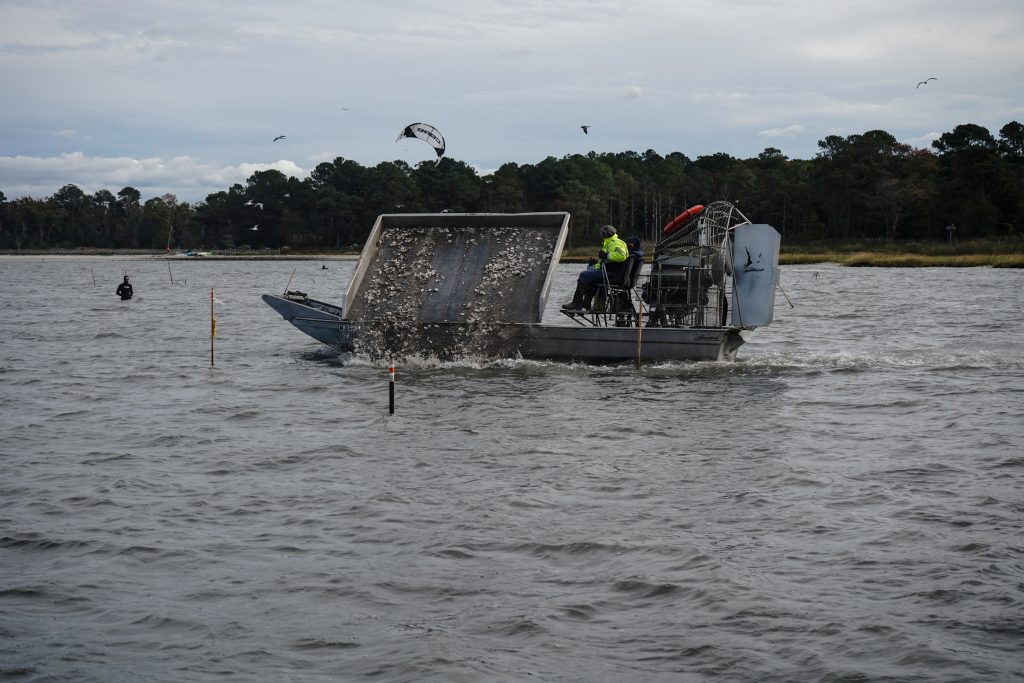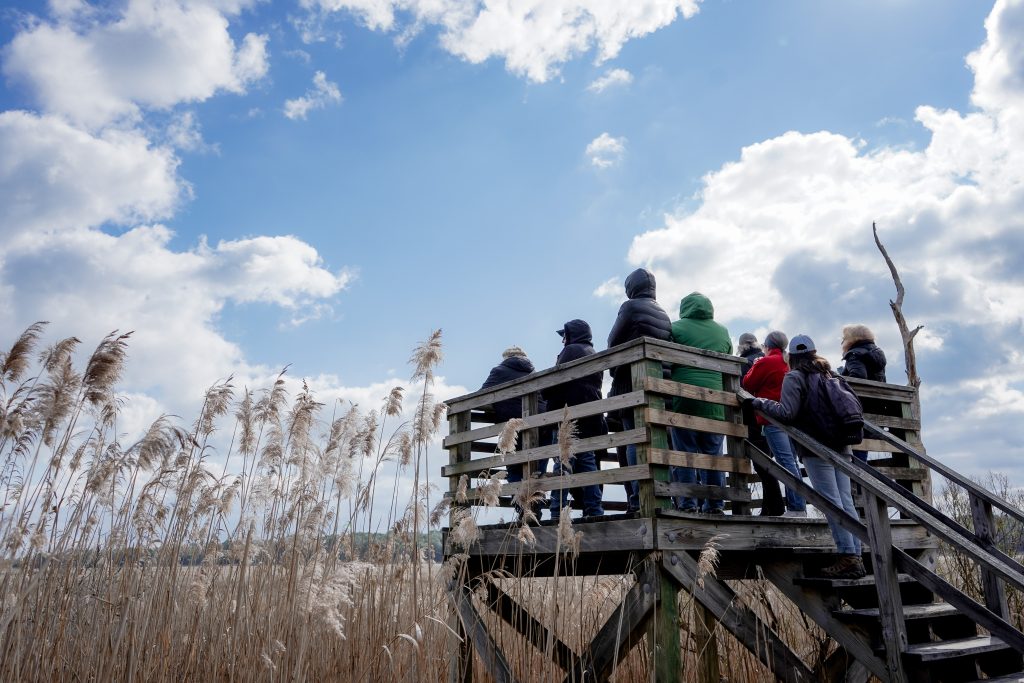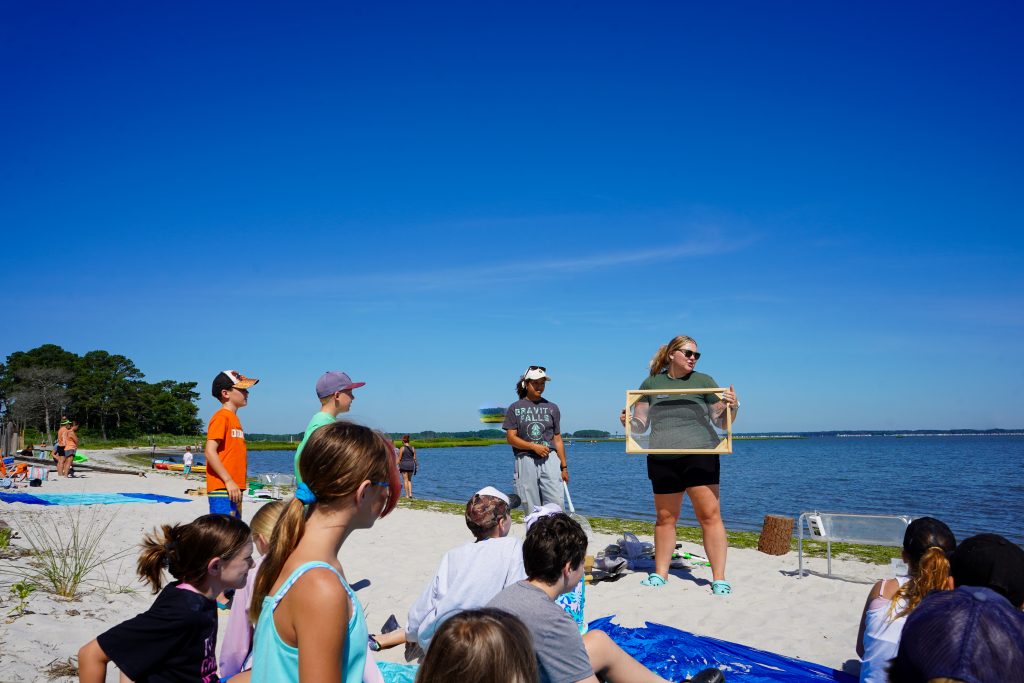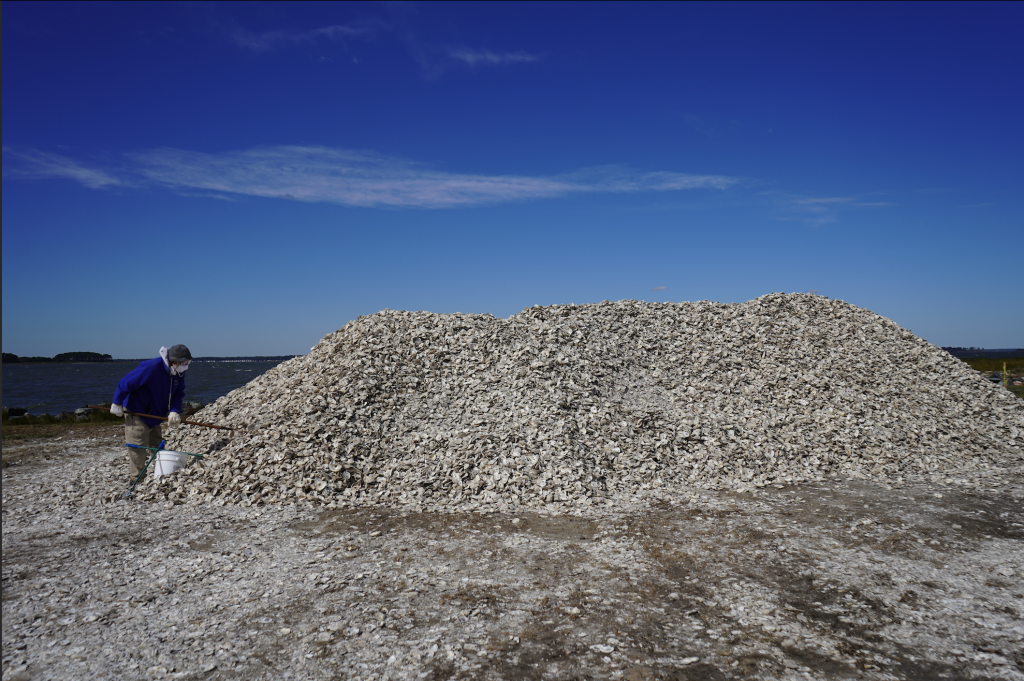Sunset at the James Farm Ecological Preserve. Photo Courtesy of Delaware Center for the Inland Bays.
This blog was written by the Delaware Center for the Inland Bays. The program is a part of the National Estuary Program. This blog is part of a series to introduce our community to the work of other National Estuary Programs throughout the country.
The Delaware Center for the Inland Bays has been a beacon of environmental stewardship for three decades, working to preserve, protect, and restore Delaware’s three Inland Bays: Rehoboth Bay, Indian River Bay, and Little Assawoman Bay. As the Center celebrated our 30th anniversary in 2024, we continue to work with our community to implement innovative projects, promote sustainable practices, and educate the public about the importance of these natural resources.
Oyster Restoration: A Game-Changer for the Bays

A testament to this community partnership is the newly constructed oyster reef at Pasture Point. The largest reef ever constructed in the Inland Bays, the project utilized 250 cubic yards of recycled shell collected through the Center’s “Don’t Chuck Your Shucks” shell recycling program. Representing over a year of shell collection from partner restaurants, the recycled shells provide the best habitat for new oysters to grow on, expanding the reef naturally. The Center’s thriving oyster program, supported by partners in Delaware’s aquaculture industry, produced over 16,500 oysters in 2024.
The James Farm Ecological Preserve: A Hub for Education and Recreation
The James Farm Ecological Preserve serves as the hub for the Center’s environmental education and community engagement. In 2024, the Preserve welcomed over 34,000 visitors, who enjoyed its scenic trails, diverse habitats, and educational programs. Recognized as the Best Green Space in Delaware by HGTV and the Best Attraction in Sussex County by Southern Delaware Tourism, the Preserve is an oasis of wildland amidst the growing development and bustling activity along Delaware’s coast.

The Preserve is currently undergoing a transformative revisioning project to enhance its facilities and programs, ensuring it continues to serve as a vital community resource for environmental education and recreation for years to come. Planned upgrades include:
- A three-season environmental education building with amenities to support hands-on learning.
- A 70-person outdoor amphitheater, for immersive presentations.
- New infrastructure for maintenance and habitat restoration activities.
- Improved trails and boardwalks, providing more accessible pathways for visitors.
- A cohesive signage and wayfinding system for an enriched visitor experience.
Engaging the Community Through Programs and Partnerships

At the James Farm Ecological Preserve, volunteers and partnerships play a pivotal role in its success. The Preserve serves as one of many sites around the Bays for the annual Horseshoe Crab Survey, with 27 dedicated volunteers contributing to data collection. The Center is also the largest partner organization for the Delaware Master Naturalist Program, hosting annual field trips and training sessions at the Preserve.
Eco Bay Kayak & SUP operates at the Preserve, offering visitors an exciting way to experience the Bays. In 2024, approximately 1,500 customers explored the Bays through guided kayak and stand-up paddleboard tours.
The Preserve’s docent program is another cornerstone of its outreach efforts, with 31 trained docents who engaged with over 6,900 visitors this year. These dedicated volunteers embody the Center’s commitment to connecting people with the natural world.

Looking Ahead
As the Delaware Center for the Inland Bays heads into its third decade, we remain steadfast in our mission to protect and restore the Rehoboth, Indian River, and Little Assawoman Bays. From pioneering restoration projects to transforming the James Farm Ecological Preserve, the Center’s initiatives strive to inspire hope for a healthier, more sustainable future for the Inland Bays Watershed.
For more information on the Delaware Center for the Inland Bays, visit inlandbays.org or find us on Facebook or Instagram.
Help us protect and restore the Morro Bay estuary!
- Donate to the Estuary Program today and support our work in the field, the lab, and beyond.
The Estuary Program is a 501(c)3 nonprofit. We depend on funding from grants and generous donors to continue our work. - Support us by purchasing estuary-themed gear from ESTERO. This locally owned and operated company donates 20% of proceeds from its Estuary clothing line and 100% of Estuary decal proceeds to the Estuary Program. Thank you, ESTERO!
- Purchase items from the Estuary Program’s store on Zazzle. Zazzle prints and ships your items, and the Estuary Program receives 10% of the proceeds.
- Subscribe to our seasonal newsletter: Between the Tides!
- We want to hear from you! Please take a few minutes to fill out this short survey about what type of events you’d like to see from the Estuary Program. We appreciate your input!